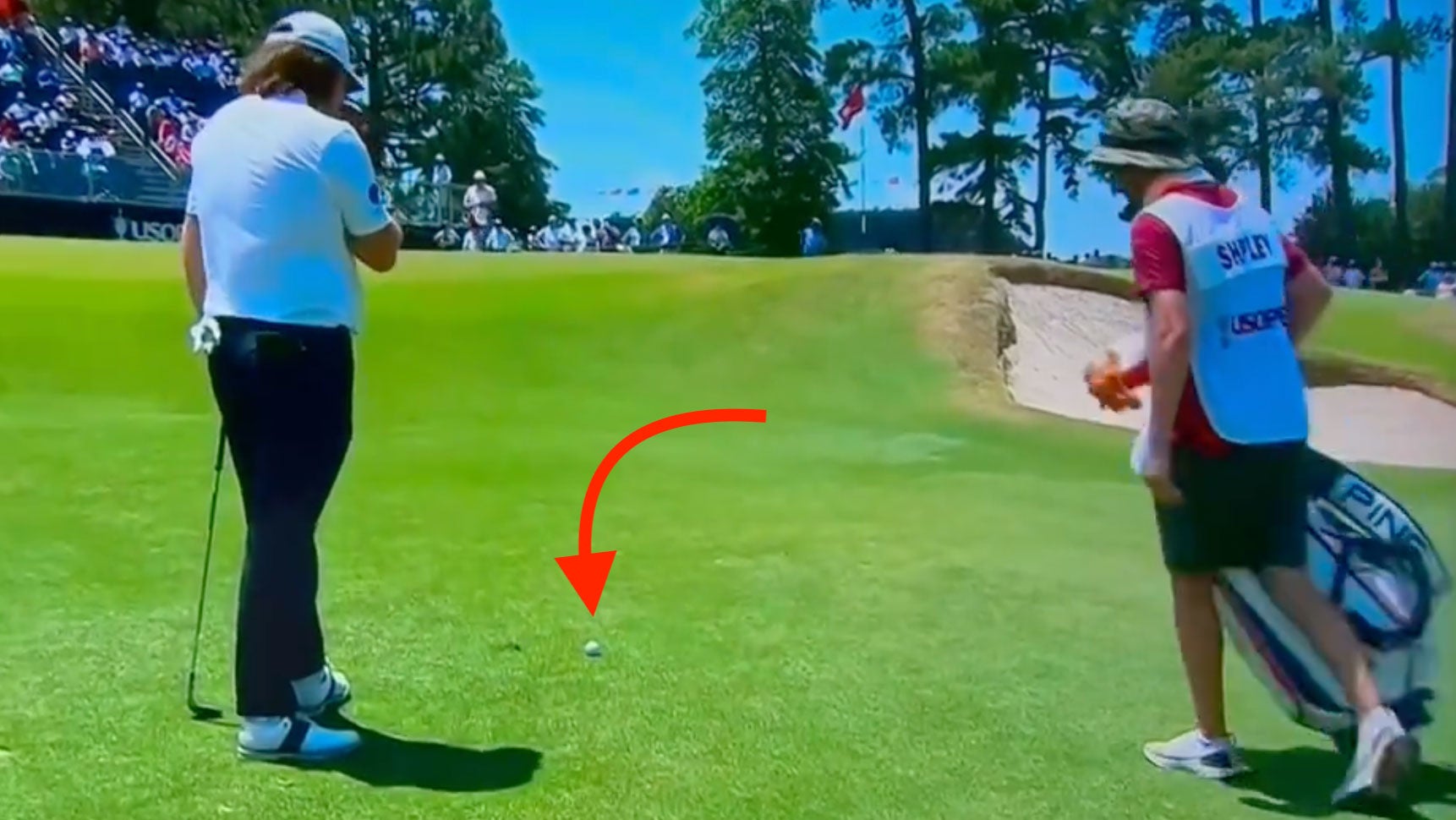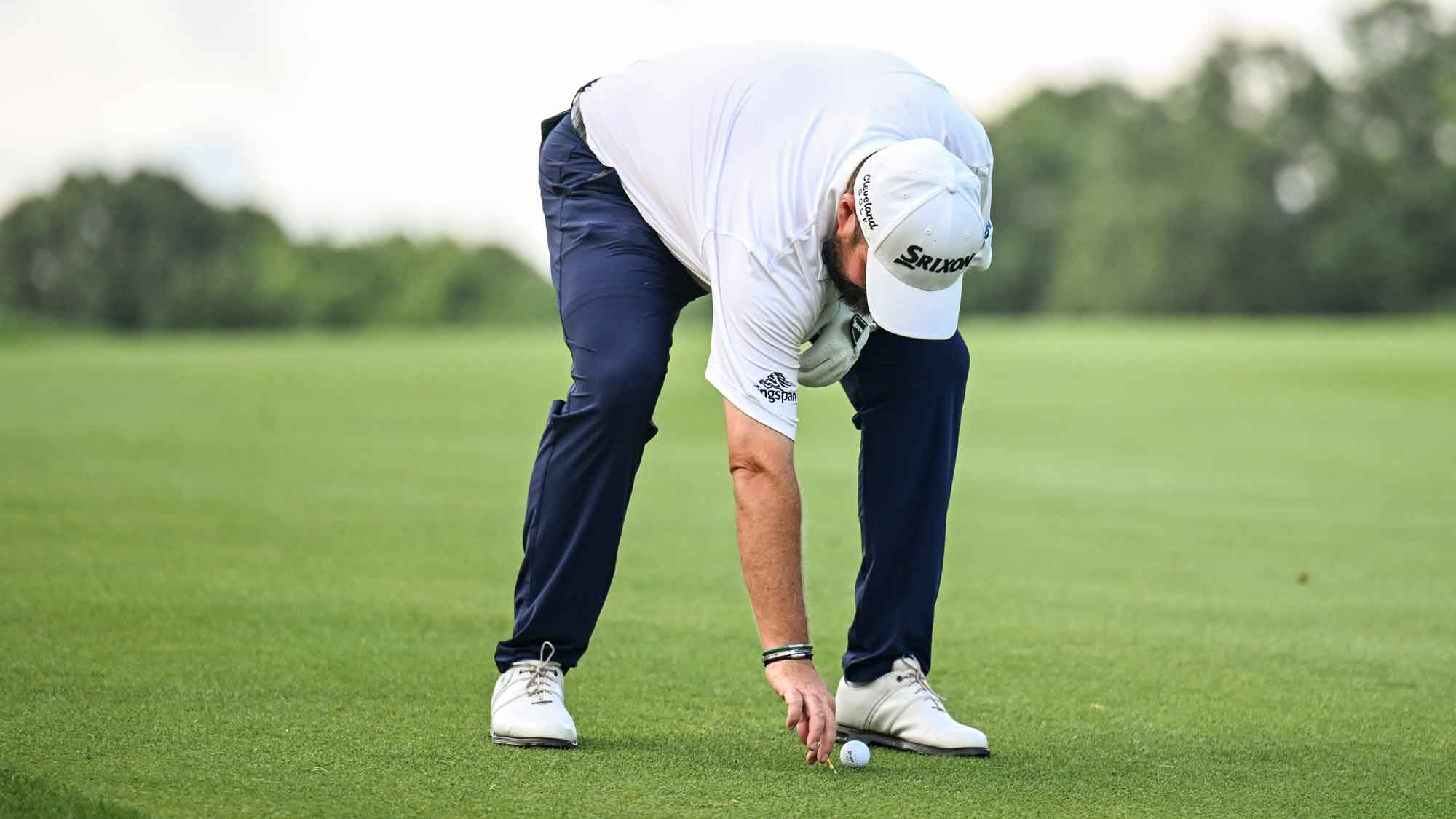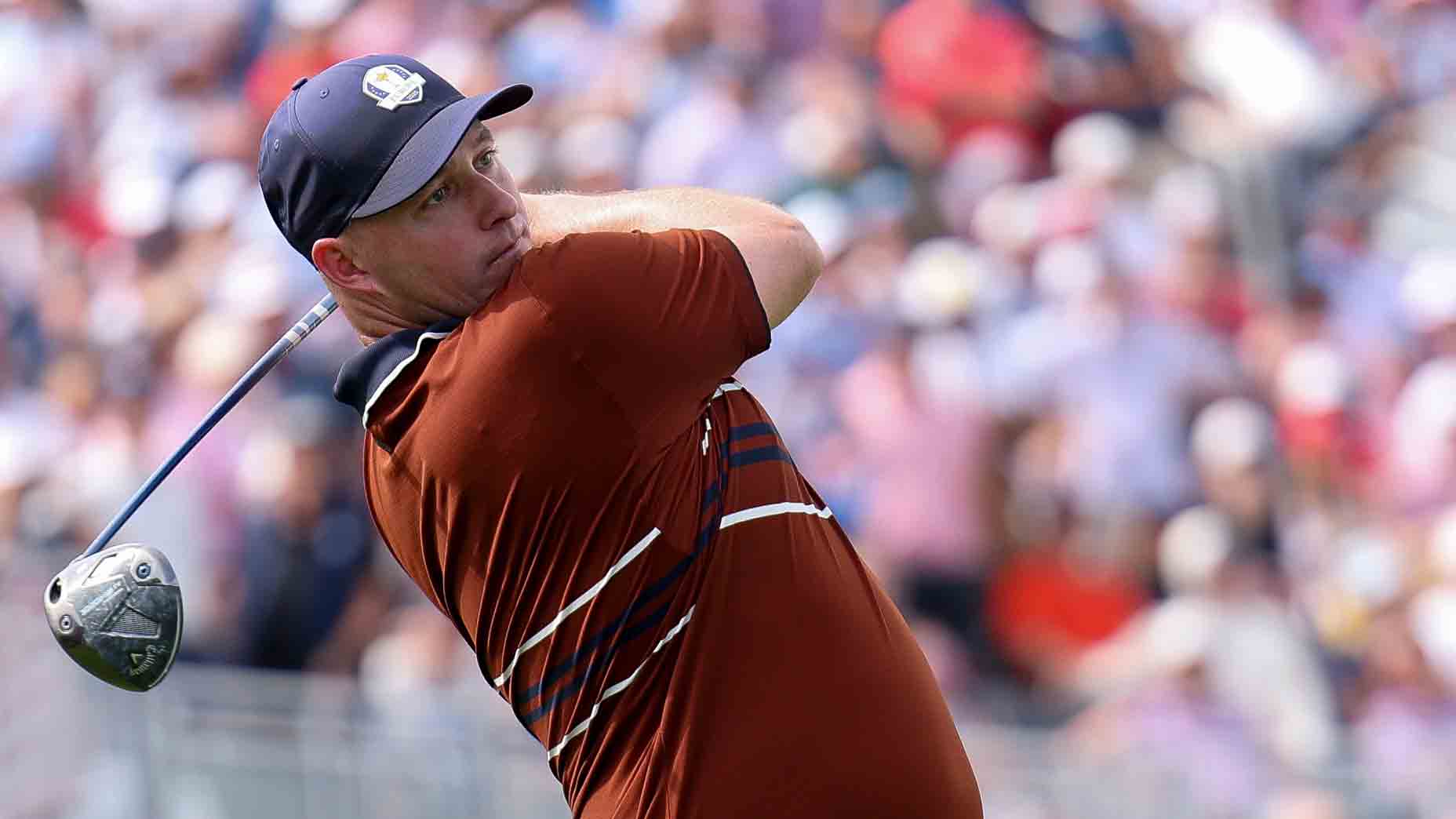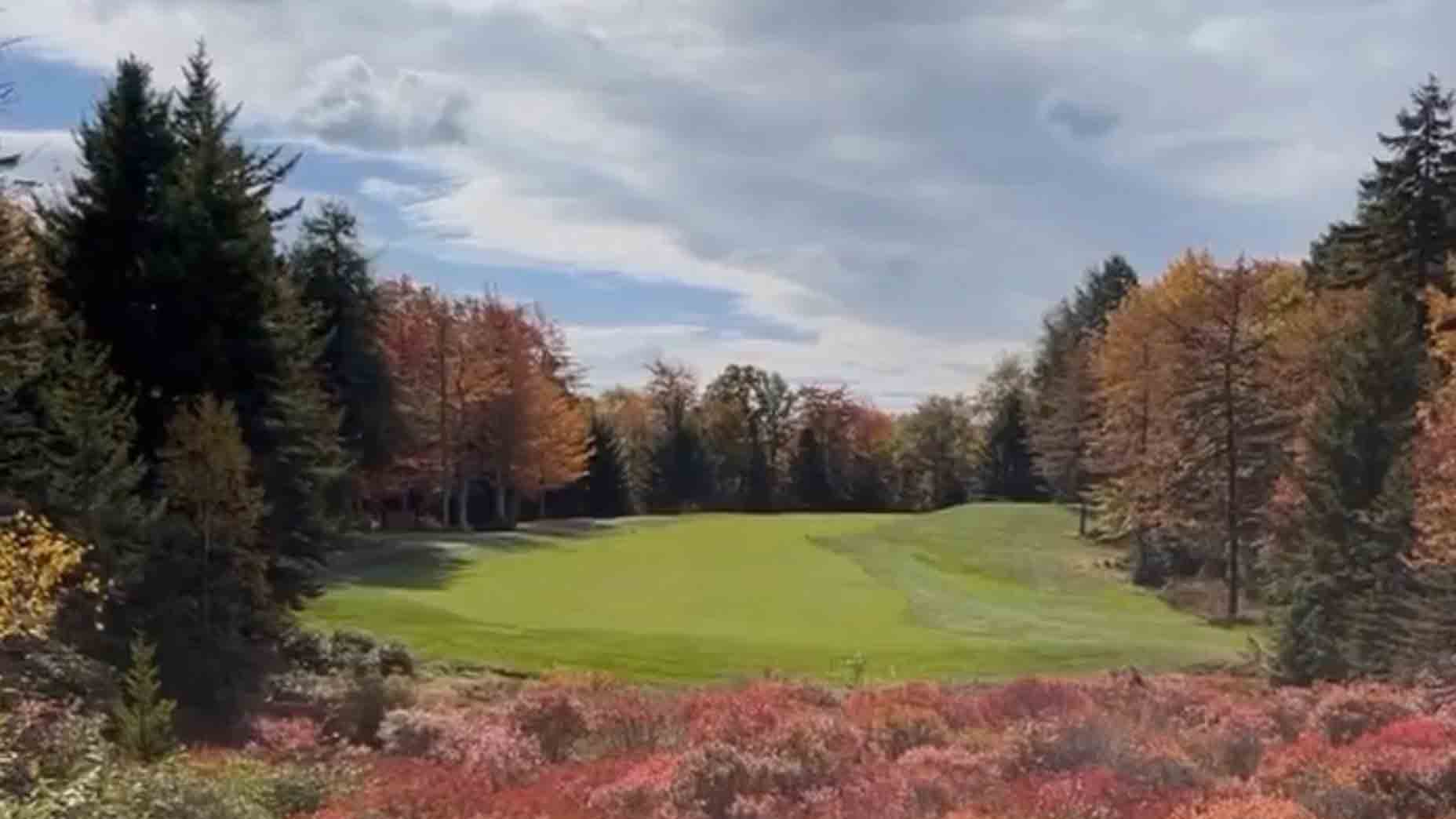PINEHURST, N.C. — On Saturday morning here at Pinehurst No. 2, Neal Shipley was cruising through the kind of U.S. Open round that any player would relish, let alone a 22-year-old amateur playing in his first U.S. Open, on a course that has been producing few red numbers but plenty of teeth-gnashing and heartache.
Through 12 holes in his third round Shipley had made five birdies and just a pair of bogeys to climb to three under for the day and even par for the championship, bringing him within five shots of Ludvig Aberg’s 36-hole lead. Shipley, who recently wrapped his spring semester as a fifth-year senior at Ohio State, has already proven he can handle the biggest of golfing stages — and not just by way of his runner-up finish in the U.S. Amateur last summer. At the Masters in April, Shipley — with his shoulder-length locks, everyman persona and affection for Waffle House — charmed the golf world when, paired with Tiger Woods, he shot a final-round 73 to claim low amateur honors.
And now here Shipley was again: another major, another impressive run up the leaderboard.
With the way he’d been striping it Saturday, Shipley wasn’t about to dial back when he arrived on the tee on the gentle dogleg-right 368-yard par-4 13th. “We were aggressive with the tee shot for that reason,” Jimmy Beck, Shipley’s caddie and an assistant golf coach at Ohio State, told me after the round. “We had a lot of momentum behind us.”
From the far left side of the tee box, Shipley blasted a drive that touched down on the left side of the fairway and rolled out to a spot that left him just 54 yards from home. From there, Shipley tried to drive in a low spinning wedge to the front-right pin, but the shot lacked the requisite mustard and rolled back about 30 yards off the front of the putting surface, coming to rest on an upslope.
The misplay left Shipley with arguably an even touchier shot. Assessing his options, he paced from his ball up to the green. A minute or so had elapsed before Shipley returned to his ball and addressed it to play his third shot. He nestled a lofted wedge on the turf just behind his orb, squeezed his grip a couple of times and…stepped off. The ball had moved. Shipley took three steps backward and raised his hand to his mouth as if he’d just seen a ghost. Beck came in for a closer look. Soon, a rules official was also on the scene.
Here’s how the USGA, in a statement, later described what had happened: “In preparing to make the stroke, Neal set the club down behind the ball and then adjusted the club when the ball then moved. Because the ball had been at rest for some time and then moved immediately after he adjusted his club, it is virtually certain that he caused the ball to move.”
Under Rule 9.4, Shipley was assessed a penalty shot and required to replace his ball as close as possible to its original spot, mere centimeters from the spot to which it had trundled.
“A shame, really,” his playing partner, Aaron Rai, would say after the round. “Took the necessary precautions to kind of have his club further back behind the ball. Felt the lie was a little bit sketchy where the ball could move. Unfortunately, it did move back. Personally, I don’t feel he caused the ball to move. I don’t think it should have been a one-shot penalty. But the USGA officials deemed it to be that way. Unfortunate really.”
Shipley gets a penalty stroke for setting his club behind the ball & it moving
— Chris Law (@ChrisLaw) June 15, 2024
🗣️“That’s what you gotta love about this game. The honor & integrity that these players have. That’s a good reflection on him &his character”
#GolfLies #USOpen
Do we really have to love this rule? pic.twitter.com/SKwiY76WmW
And Shipley’s take?
After finishing his round, Shipley walked off the 18th green and down the stairwell that leads to the scoring room beneath the clubhouse. Joining him and Rai behind a closed door was Thomas Pagel, the USGA’s chief governance office, who wanted Shipley to review a video replay of the incident at 13. A few minutes passed, then a few more, before Pagel exited the room, phone to his ear, talking through the ruling with someone on the other end of the line. A minute or two later, Pagel returned to the scoring room, closing the door behind him. By this time, Si Woo Kim and Daniel Berger, who were in the pairing behind Shipley’s, had appeared to sign off on their own rounds.
“They’re discussing a ruling,” a security guard said. “I can’t let you in.”
A couple of minutes after that, Shipley and Rai finally appeared. Shipley signed a couple of balls for the standard bearer in his group then debriefed his caddie and agent, Terry Reilly, on what had gone down at the 13th. He looked and sounded agitated as he reenacted how he had addressed the ball. But there was little time for deconstruction because, a media official told Shipley, a couple of reporters were waiting to speak with Shipley outside the clubhouse.
When Shipley convened with the scribes, he said of his moving ball: “What they had told me was because the ball had been at rest for a good minute or so — enough time for me to walk up and back from the green — and that my club had gone down and then the ball rolled, they’re making the assumption that my club is what caused it to move, which is, I guess, is a fair assessment. I’m certainly not happy about getting any kind of penalty, but it’s golf. Those things happen.”
Moving balls have not been a common occurrence at Pinehurst No. 2 this week, largely because the slopes around the greens are so severe that balls have not clung to them, instead gathering in collection areas. The movement at 13 certainly was the first such situation for Shipley at this tournament. “He’s hit it so well that we haven’t been in many weird positions this week,” Beck said, “and I haven’t heard about it happening much to other players, either.”
Golfers at every level, but especially at this level, intuitively know (a) if a ball has moved, and (b) what caused it to do so. If golfers are paying attention to their business, which is what golfers do, even the most minute of ball shifts is hard to miss, as is the cause of said ball shifts. Did Shipley, I asked him, believe he had caused his ball to move?
“I don’t think I caused it to move,” he said. “But it doesn’t really matter what I think at the end of the day.”
Shipley is right. On anywhere but on the putting green if a ball moves after a golfer has grounded his or her club behind it, there’s little gray area. Penalty. Replace. Move on. After replacing his ball at 13, Shipley hit his fourth shot through the back of the green then needed two more shots to hole out from there. “Tough one to swallow,” he said later. “I was three under and then to make a double, it definitely kills the momentum.”
Shipley bounced back with a par at 14 but gave back two more shots with bogeys at 15 and 16 before closing with two pars to sign for a one-over 71. Two other amateurs made the cut this week — Gunnar Broin, who plays for the University of Kansas, and Luke Clanton from Florida State — but Clanton, who is knotted with Shipley at four over, is Shipley’s only contender for low amateur honors. on Sunday, they will play in the same pairing, going off at 12:04 p.m. Match play for the low am medal. Whatever the result, Shipley’s week at Pinehurst has provided him with more invaluable experience, rules drama and all.
“It’s a good learning moment for him,” Beck said of the penalty. “Luckily it doesn’t cost him any money.”










